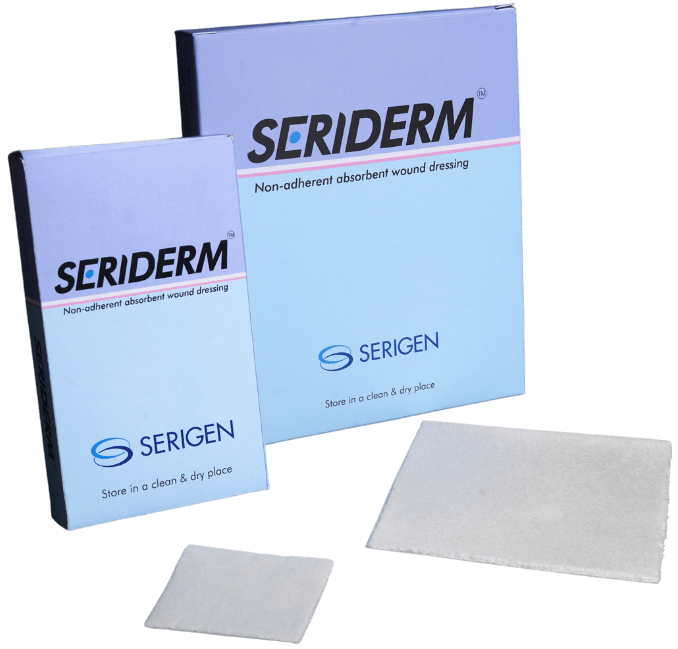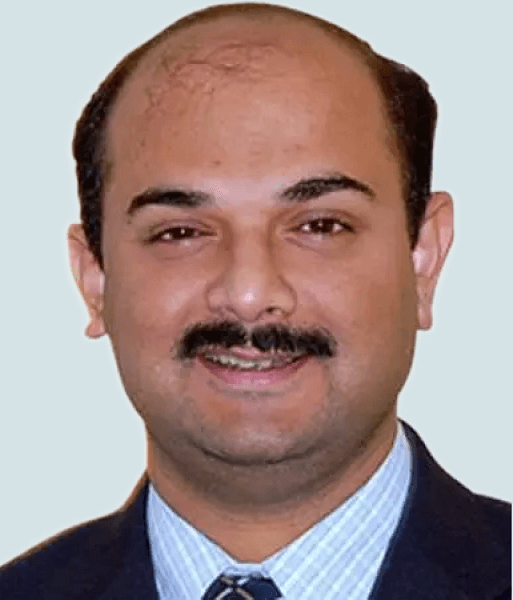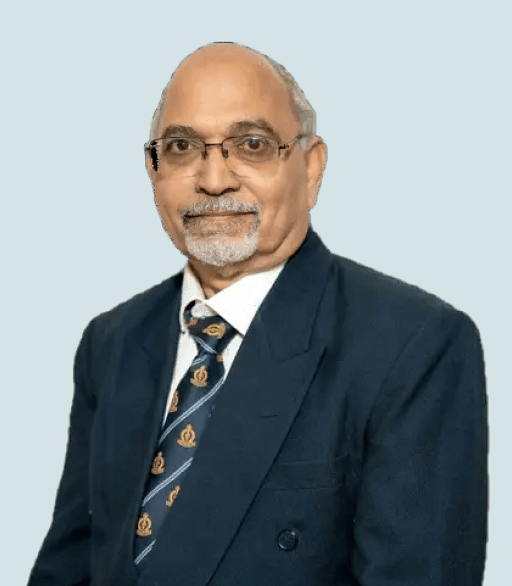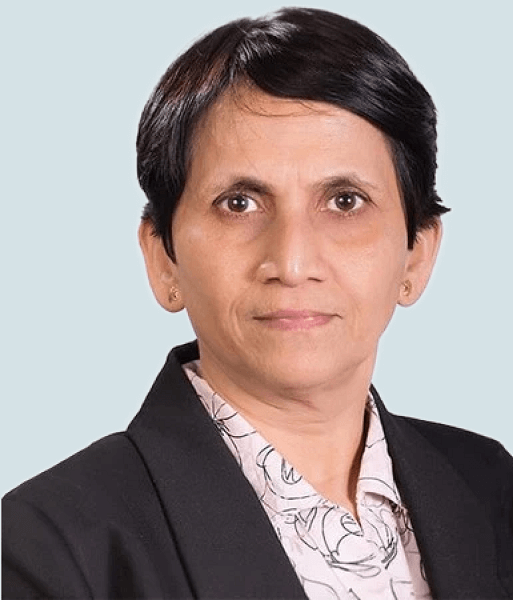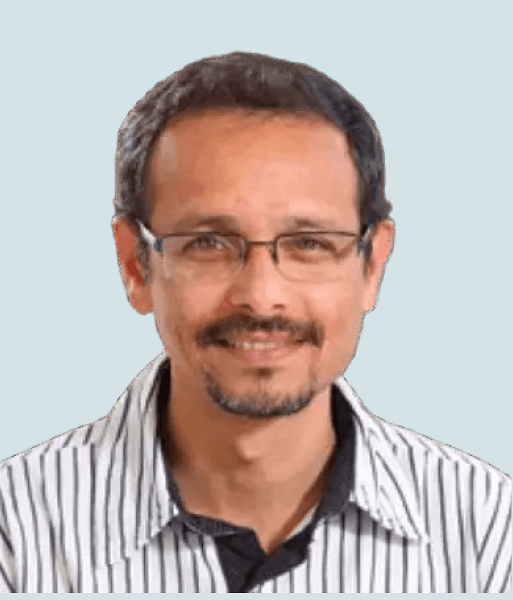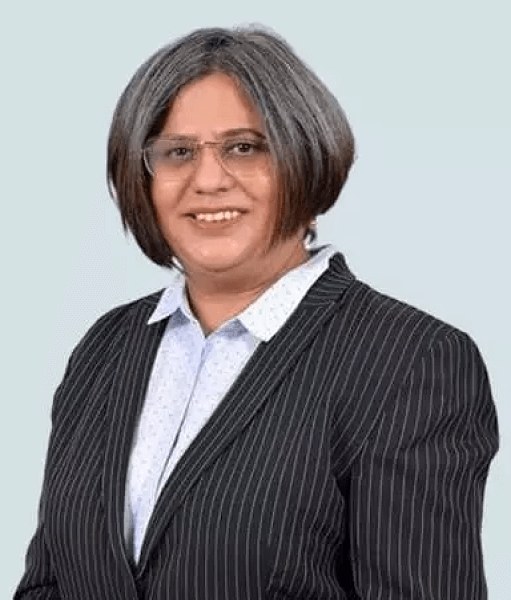How SERIMAT® Revolutionizes Soft Tissue Regeneration Across Multiple Applications
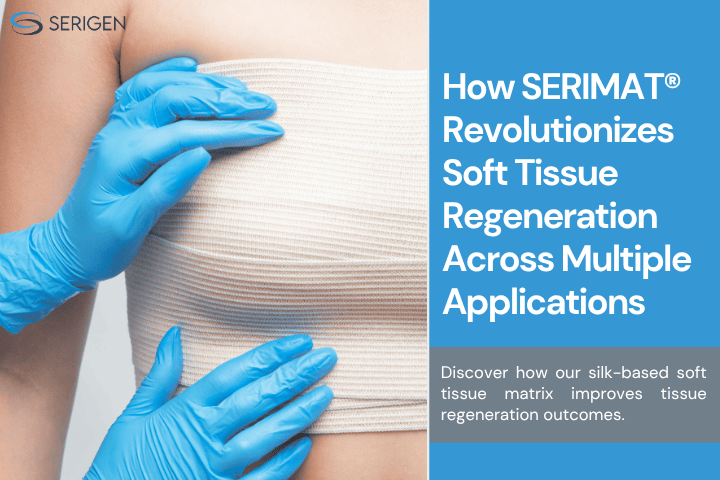
What is Soft Tissue regeneration?
Soft tissue regeneration is a natural/induced process of repair or renewal of damaged soft tissues like skin, muscle, and other connective tissue, etc. This can occur naturally after injury as a part of the body’s healing process. Severe tissue damage that can not heal on its own requires medical intervention. Such injuries are usually treated by a tissue engineering approach. The primary aim of tissue engineering is to provide a three-dimensional scaffold that can be used for the reconstruction or regeneration of damaged tissues. These scaffolds enhance the body’s natural healing process by providing a conducive environment required for tissue regeneration. The goal of soft tissue regeneration is to restore the natural structure, appearance, feel and functionality of the damaged tissue.
The Role and Types of Soft Tissue Scaffolds
Soft tissue scaffolds play a critical role in tissue engineering and regenerative medicine. The key function of a soft tissue regeneration scaffold is to create an environment optimal for cell attachment, proliferation, and differentiation. These scaffolds act as temporary matrices that guide the regeneration of damaged/lost soft tissues by providing structural and mechanical support until the body can replace it with its own tissue.
An ideal scaffold should have the following characteristics-
- It should be biocompatible
- It should promote cellular adhesion and proliferation,
- It should align with the mechanical properties of the native tissue
- The resorption rate should match the rate of new tissue regeneration.
Currently used options involve autografts, acellular dermal matrices (ADMs), synthetic meshes, etc. ADMs are decellularized collagen matrices derived from human, bovine, porcine or cadaveric origins. Synthetic meshes, commonly made from materials like polypropylene, polyester, or polytetrafluoroethylene (PTFE), are widely used for structural support in soft tissue regeneration. Both types of matrices provide structural support and promote tissue regeneration in various medical procedures. Of these, absorbable, non-absorbable, and composite meshes are currently in use due to their strength and durability.

Understanding Soft Tissue Reconstruction Needs and Drawbacks of Current Techniques
Understanding the specific needs and limitations of soft tissue reconstruction in various clinical contexts is essential to developing next-generation biomaterials that offer safer, more effective, and universally applicable solutions. Whether addressing defects in the breast, vaginal wall, abdominal wall, or dura mater, each application presents unique challenges and demands specialized materials to promote healing and integration. Current techniques rely heavily on acellular matrices, synthetic meshes, or autologous grafts; however, these approaches often face limitations as discussed below.
1. Breast Reconstruction after Mastectomy
Mastectomy is the surgical removal of breast tissue. Post-mastectomy, patients can opt for implant-based breast reconstruction. Implant-based reconstruction involves a silicone / saline implant to restore breast volume. ADMs and synthetic meshes are used to hold the implant in place and support new tissue formation. However, ADMs impose a high risk of infection transmission and postoperative complications such as seroma, skin necrosis, poor angiogenesis, haematoma, and poor tissue integration. Their use is also limited by prohibitive cost and unavailability. Conversely, synthetic meshes exhibit poor cellular adhesion, leading to inadequate tissue integration and complications like seroma.
2. Vaginal Wall Reconstruction
Unlike breast reconstruction, vaginal wall reconstruction may be necessary after pelvic organ prolapse, trauma, tumour, etc., or several congenital abnormalities such as vaginal aplasia. Primarily, decellularised vaginal matrices (DVMs) from autologous or xenogeneic sources are used as scaffolds for reconstruction.
Autografting of soft tissue, though most effective and biocompatible, poses limitations including donor site morbidity, limited tissue availability, longer surgery time, and other complications such as infections, bleeding, etc. ECM (extracellular matrix) – derived scaffolds such as DVMs pose a risk of infections or may lead to impaired tissue regeneration, inflammatory response, and graft rejection. This could be attributed to higher resorption rates.
3. Abdominal Wall Reconstruction
Weakened or damaged abdominal muscles can be reconstructed by the use of meshes or scaffolding matrices. This may be required for large and complex hernias, wounds or trauma, tumors, etc.
While synthetic meshes have been successfully used, a subset of patients show long-term complications, such as wound dehiscence, rejection, and the need for re-surgery after 5 years. Furthermore, some patients have reported post-operative complications such as seroma, hematoma, skin necrosis, and pain and discomfort upon mesh retraction.
4. Dural Repair
Repair of the dura mater, the outer membrane surrounding the brain and spinal cord, has also been explored with the use of meshes/matrices to enhance tissue regeneration after spinal cord injuries.
One of the primary concerns with synthetic materials such as polyglycolic acid and polytetrafluoroethylene is the biocompatibility and performance variation based on the size and location of the defect.
To address these challenges, there is a need for a matrix that enhances tissue integration while minimizing infection risks and other complications. The call of the hour is a one-stop biocompatible solution with optimal mechanical properties and porosity. Such a scaffold matrix should support cellular adhesion, proliferation, and angiogenesis, ultimately resulting in soft tissue regeneration.
How SERIMAT® Offers Superior Soft Tissue Regeneration
SERIMAT® is Serigen’s next-generation silk protein-based tissue regeneration product. It is a soft tissue regeneration matrix. Leveraging silk – a naturally biocompatible protein – SERIMAT® combines biocompatibility with optimal mechanical properties to deliver a breakthrough solution for soft tissue repair and regeneration – for applications such as implant-based breast reconstruction, vaginal wall reconstruction, abdominal wall reconstruction, and dural repair. Serimat has demonstrated its effectiveness as a soft tissue regeneration matrix in a simulated breast reconstruction model in pigs. Currently, Serimat is under pilot clinical trials and is being explored in implant-based breast reconstruction surgery, but it is a platform technology that can serve the need for other clinical applications.
Unique design of SERIMAT® ensures:
- Biocompatibility (ISO 10993 compliant)
- Optimal surface texture, porosity across thickness, optimal pore size and a vast surface area. These properties enable rapid angiogenesis (formation of blood vessels) and enhanced collagen deposition.
- Unique 3D architecture to support cellular attachment, proliferation, and differentiation, thereby leading to enhanced tissue integration and regeneration.
- Mechanical robustness, making it suturable, conformable, and easy to handle in surgery.
Conclusion
Soft tissue regeneration using natural polymers of silk is the future owing to its unique properties. With groundbreaking research in the field of soft tissue regeneration using silk proteins, Serigen has provided a strong platform for versatile reconstructive applications. With its superior safety profile, accelerated healing potential, and affordable price point, SERIMAT® offers an ideal solution for soft tissue reconstruction, overcoming the pitfalls of existing soft tissue scaffolds. Like other Serigen innovations, it embodies the future of regenerative medicine, offering fast, effective, and safe healing with minimal post-operative complications. Therefore, SERIMAT® has the potential to significantly transform the landscape of soft tissue regeneration, improving patient outcomes and expediting recovery.
References
- Hope, W. W., Abdul, W., & Winters, R. (2023, July 24). Abdominal wall reconstruction. StatPearls – NCBI Bookshelf. https://www.ncbi.nlm.nih.gov/books/NBK431108/
- Lacour, M., Zins, C. R., Casa, C., Venara, A., Cartier, V., Yahya, S., Barbieux, J., & Aubé, C. (2017). CT findings of complications after abdominal wall repair with prosthetic mesh. Diagnostic and Interventional Imaging, 98(7–8), 517–528. https://doi.org/10.1016/j.diii.2017.01.002
- Mastectomy – Mayo Clinic. (n.d.). https://www.mayoclinic.org/tests-procedures/mastectomy/about/pac-20394670#:~:text=Mastectomy%20removes%20all%20of%20the,of%20radiation%20to%20the%20skin.
- Mooradian, D. (2016). Allografts and xenografts in soft tissue repair. In Elsevier eBooks (pp. 41–62). https://doi.org/10.1016/b978-0-08-100166-0.00004-9
- Niaounakis, M. (2015). Medical, dental, and pharmaceutical applications. In Elsevier eBooks (pp. 291–405). https://doi.org/10.1016/b978-0-323-35399-1.00007-7
- Sueters, J., De Boer, L., Groenman, F., Huirne, J. a. F., Smit, T. H., & Zaat, S. a. J. (2024). A sterilization method for human decellularized vaginal matrices. Scientific Reports, 14(1). https://doi.org/10.1038/s41598-024-82409-4
- Ueki, M., & Ito, Y. (2019). In vitro niches for the culture of pluripotent stem cells. In Elsevier eBooks. https://doi.org/10.1016/b978-0-12-801238-3.65534-4
- Wales, E., & Holloway, S. (2018). The use of prosthetic mesh for abdominal wall repairs: A semi‐systematic‐literature review. International Wound Journal, 16(1), 30–40. https://doi.org/10.1111/iwj.12977
 Author Bio – Aarjvi Jain is a research assistant at Serigen Mediproducts. She holds a Gold Medal in Master’s in Medical Biotechnology from Bharathiar University and has experience in biotechnology research and scientific communication, writing and illustration.
Author Bio – Aarjvi Jain is a research assistant at Serigen Mediproducts. She holds a Gold Medal in Master’s in Medical Biotechnology from Bharathiar University and has experience in biotechnology research and scientific communication, writing and illustration. 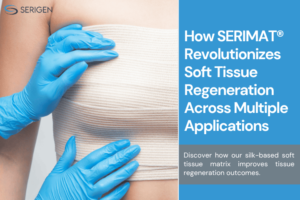
What is Soft Tissue regeneration?
Soft tissue regeneration is a natural/induced process of repair or renewal of damaged soft tissues like skin, muscle, and other connective tissue, etc. This can occur naturally after injury as a part of the body’s healing process. Severe tissue damage that can not heal on its own requires medical intervention. Such injuries are usually treated by a tissue engineering approach. The primary aim of tissue engineering is to provide a three-dimensional scaffold that can be used for the reconstruction or regeneration of damaged tissues. These scaffolds enhance the body’s natural healing process by providing a conducive environment required for tissue regeneration. The goal of soft tissue regeneration is to restore the natural structure, appearance, feel and functionality of the damaged tissue.
The Role and Types of Soft Tissue Scaffolds
Soft tissue scaffolds play a critical role in tissue engineering and regenerative medicine. The key function of a soft tissue regeneration scaffold is to create an environment optimal for cell attachment, proliferation, and differentiation. These scaffolds act as temporary matrices that guide the regeneration of damaged/lost soft tissues by providing structural and mechanical support until the body can replace it with its own tissue.
An ideal scaffold should have the following characteristics-
- It should be biocompatible
- It should promote cellular adhesion and proliferation,
- It should align with the mechanical properties of the native tissue
- The resorption rate should match the rate of new tissue regeneration.
Currently used options involve autografts, acellular dermal matrices (ADMs), synthetic meshes, etc. ADMs are decellularized collagen matrices derived from human, bovine, porcine or cadaveric origins. Synthetic meshes, commonly made from materials like polypropylene, polyester, or polytetrafluoroethylene (PTFE), are widely used for structural support in soft tissue regeneration. Both types of matrices provide structural support and promote tissue regeneration in various medical procedures. Of these, absorbable, non-absorbable, and composite meshes are currently in use due to their strength and durability.
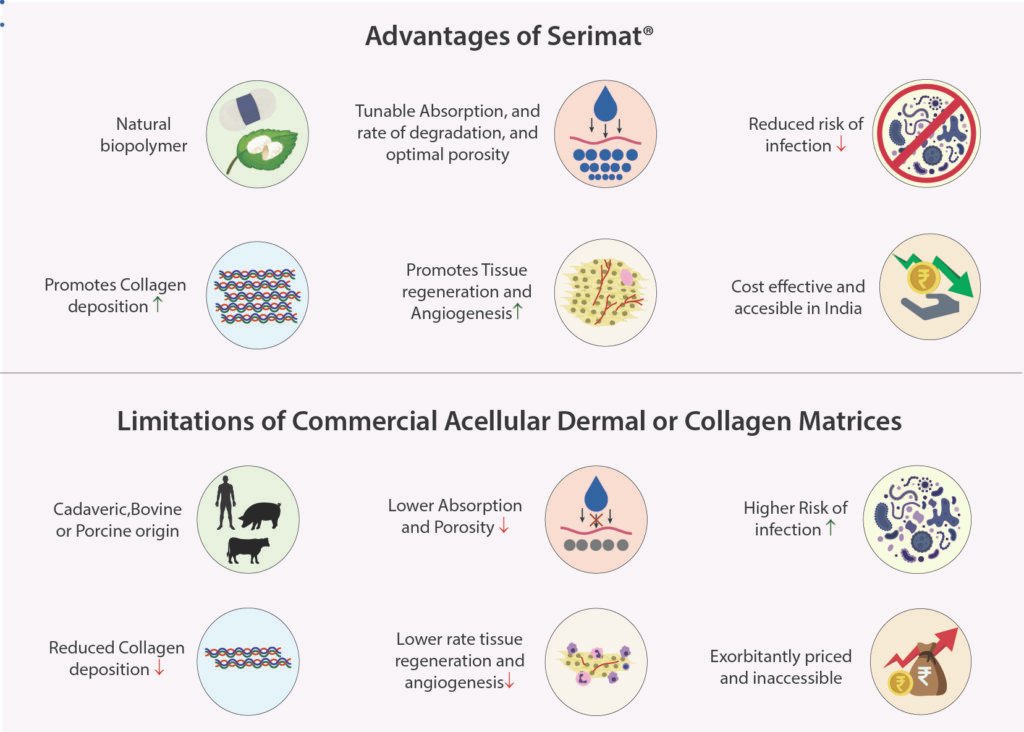
Understanding Soft Tissue Reconstruction Needs and Drawbacks of Current Techniques
Understanding the specific needs and limitations of soft tissue reconstruction in various clinical contexts is essential to developing next-generation biomaterials that offer safer, more effective, and universally applicable solutions. Whether addressing defects in the breast, vaginal wall, abdominal wall, or dura mater, each application presents unique challenges and demands specialized materials to promote healing and integration. Current techniques rely heavily on acellular matrices, synthetic meshes, or autologous grafts; however, these approaches often face limitations as discussed below.
1. Breast Reconstruction after Mastectomy
Mastectomy is the surgical removal of breast tissue. Post-mastectomy, patients can opt for implant-based breast reconstruction. Implant-based reconstruction involves a silicone / saline implant to restore breast volume. ADMs and synthetic meshes are used to hold the implant in place and support new tissue formation. However, ADMs impose a high risk of infection transmission and postoperative complications such as seroma, skin necrosis, poor angiogenesis, haematoma, and poor tissue integration. Their use is also limited by prohibitive cost and unavailability. Conversely, synthetic meshes exhibit poor cellular adhesion, leading to inadequate tissue integration and complications like seroma.
2. Vaginal Wall Reconstruction
Unlike breast reconstruction, vaginal wall reconstruction may be necessary after pelvic organ prolapse, trauma, tumour, etc., or several congenital abnormalities such as vaginal aplasia. Primarily, decellularised vaginal matrices (DVMs) from autologous or xenogeneic sources are used as scaffolds for reconstruction.
Autografting of soft tissue, though most effective and biocompatible, poses limitations including donor site morbidity, limited tissue availability, longer surgery time, and other complications such as infections, bleeding, etc. ECM (extracellular matrix) – derived scaffolds such as DVMs pose a risk of infections or may lead to impaired tissue regeneration, inflammatory response, and graft rejection. This could be attributed to higher resorption rates.
3. Abdominal Wall Reconstruction
Weakened or damaged abdominal muscles can be reconstructed by the use of meshes or scaffolding matrices. This may be required for large and complex hernias, wounds or trauma, tumors, etc.
While synthetic meshes have been successfully used, a subset of patients show long-term complications, such as wound dehiscence, rejection, and the need for re-surgery after 5 years. Furthermore, some patients have reported post-operative complications such as seroma, hematoma, skin necrosis, and pain and discomfort upon mesh retraction.
4. Dural Repair
Repair of the dura mater, the outer membrane surrounding the brain and spinal cord, has also been explored with the use of meshes/matrices to enhance tissue regeneration after spinal cord injuries.
One of the primary concerns with synthetic materials such as polyglycolic acid and polytetrafluoroethylene is the biocompatibility and performance variation based on the size and location of the defect.
To address these challenges, there is a need for a matrix that enhances tissue integration while minimizing infection risks and other complications. The call of the hour is a one-stop biocompatible solution with optimal mechanical properties and porosity. Such a scaffold matrix should support cellular adhesion, proliferation, and angiogenesis, ultimately resulting in soft tissue regeneration.
How SERIMAT® Offers Superior Soft Tissue Regeneration
SERIMAT® is Serigen’s next-generation silk protein-based tissue regeneration product. It is a soft tissue regeneration matrix. Leveraging silk – a naturally biocompatible protein – SERIMAT® combines biocompatibility with optimal mechanical properties to deliver a breakthrough solution for soft tissue repair and regeneration – for applications such as implant-based breast reconstruction, vaginal wall reconstruction, abdominal wall reconstruction, and dural repair. Serimat has demonstrated its effectiveness as a soft tissue regeneration matrix in a simulated breast reconstruction model in pigs. Currently, Serimat is under pilot clinical trials and is being explored in implant-based breast reconstruction surgery, but it is a platform technology that can serve the need for other clinical applications.
Unique design of SERIMAT® ensures:
- Biocompatibility (ISO 10993 compliant)
- Optimal surface texture, porosity across thickness, optimal pore size and a vast surface area. These properties enable rapid angiogenesis (formation of blood vessels) and enhanced collagen deposition.
- Unique 3D architecture to support cellular attachment, proliferation, and differentiation, thereby leading to enhanced tissue integration and regeneration.
- Mechanical robustness, making it suturable, conformable, and easy to handle in surgery.
Conclusion
Soft tissue regeneration using natural polymers of silk is the future owing to its unique properties. With groundbreaking research in the field of soft tissue regeneration using silk proteins, Serigen has provided a strong platform for versatile reconstructive applications. With its superior safety profile, accelerated healing potential, and affordable price point, SERIMAT® offers an ideal solution for soft tissue reconstruction, overcoming the pitfalls of existing soft tissue scaffolds. Like other Serigen innovations, it embodies the future of regenerative medicine, offering fast, effective, and safe healing with minimal post-operative complications. Therefore, SERIMAT® has the potential to significantly transform the landscape of soft tissue regeneration, improving patient outcomes and expediting recovery.
References
- Hope, W. W., Abdul, W., & Winters, R. (2023, July 24). Abdominal wall reconstruction. StatPearls – NCBI Bookshelf. https://www.ncbi.nlm.nih.gov/books/NBK431108/
- Lacour, M., Zins, C. R., Casa, C., Venara, A., Cartier, V., Yahya, S., Barbieux, J., & Aubé, C. (2017). CT findings of complications after abdominal wall repair with prosthetic mesh. Diagnostic and Interventional Imaging, 98(7–8), 517–528. https://doi.org/10.1016/j.diii.2017.01.002
- Mastectomy – Mayo Clinic. (n.d.). https://www.mayoclinic.org/tests-procedures/mastectomy/about/pac-20394670#:~:text=Mastectomy%20removes%20all%20of%20the,of%20radiation%20to%20the%20skin.
- Mooradian, D. (2016). Allografts and xenografts in soft tissue repair. In Elsevier eBooks (pp. 41–62). https://doi.org/10.1016/b978-0-08-100166-0.00004-9
- Niaounakis, M. (2015). Medical, dental, and pharmaceutical applications. In Elsevier eBooks (pp. 291–405). https://doi.org/10.1016/b978-0-323-35399-1.00007-7
- Sueters, J., De Boer, L., Groenman, F., Huirne, J. a. F., Smit, T. H., & Zaat, S. a. J. (2024). A sterilization method for human decellularized vaginal matrices. Scientific Reports, 14(1). https://doi.org/10.1038/s41598-024-82409-4
- Ueki, M., & Ito, Y. (2019). In vitro niches for the culture of pluripotent stem cells. In Elsevier eBooks. https://doi.org/10.1016/b978-0-12-801238-3.65534-4
- Wales, E., & Holloway, S. (2018). The use of prosthetic mesh for abdominal wall repairs: A semi‐systematic‐literature review. International Wound Journal, 16(1), 30–40. https://doi.org/10.1111/iwj.12977
 Author Bio – Aarjvi Jain is a research assistant at Serigen Mediproducts. She holds a Gold Medal in Master’s in Medical Biotechnology from Bharathiar University and has experience in biotechnology research and scientific communication, writing, and illustration.
Author Bio – Aarjvi Jain is a research assistant at Serigen Mediproducts. She holds a Gold Medal in Master’s in Medical Biotechnology from Bharathiar University and has experience in biotechnology research and scientific communication, writing, and illustration. 

